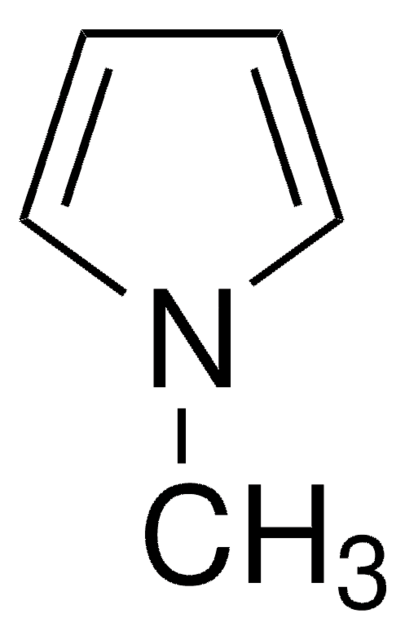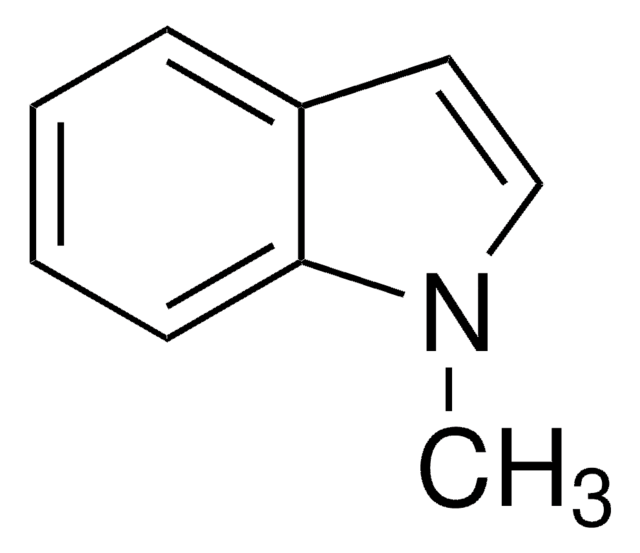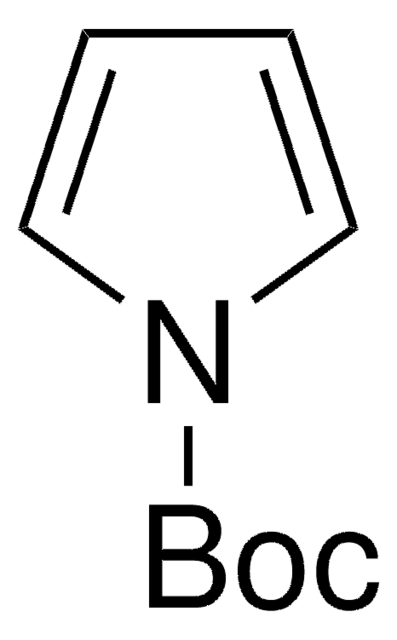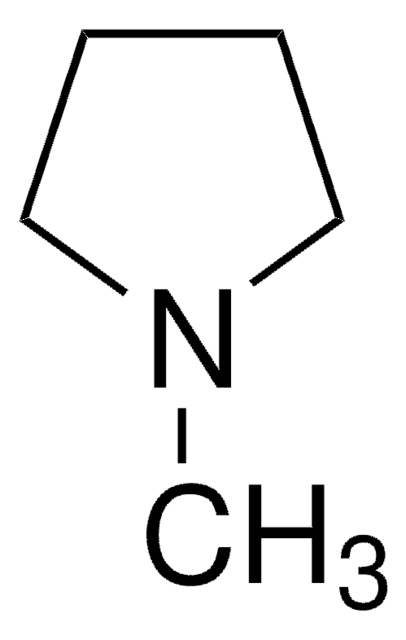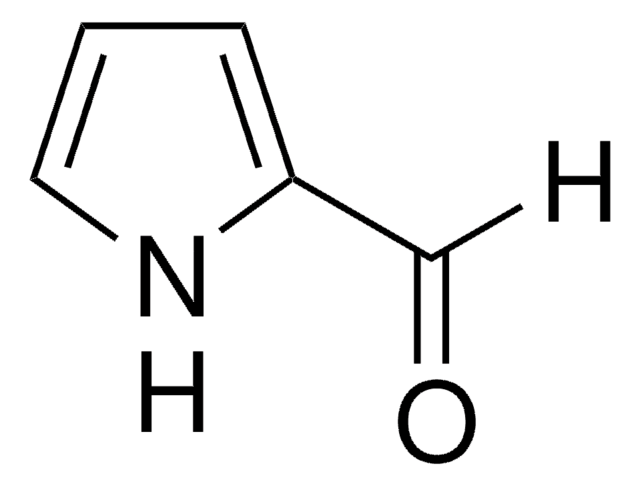131474
1-Phenylpyrrole
99%
Se connecterpour consulter vos tarifs contractuels et ceux de votre entreprise/organisme
About This Item
Formule empirique (notation de Hill):
C10H9N
Numéro CAS:
Poids moléculaire :
143.19
Numéro CE :
Numéro MDL:
Code UNSPSC :
12352100
ID de substance PubChem :
Nomenclature NACRES :
NA.22
Produits recommandés
Niveau de qualité
Pureté
99%
Forme
solid
Point d'ébullition
234 °C (lit.)
Pf
58-60 °C (lit.)
Chaîne SMILES
c1ccc(cc1)-n2cccc2
InChI
1S/C10H9N/c1-2-6-10(7-3-1)11-8-4-5-9-11/h1-9H
Clé InChI
GEZGAZKEOUKLBR-UHFFFAOYSA-N
Description générale
1-Phenylpyrrole inhibited cytochrome P-450 dependant monooxygenase activity in microsomes from rat liver.
Application
1-Phenylpyrrole was used to study the half-wave potentials of the aqueous redox couples and the oxidation potentials of the monomers in 1,2-dichloroethane.
Mention d'avertissement
Warning
Mentions de danger
Conseils de prudence
Classification des risques
Eye Irrit. 2 - Skin Irrit. 2 - STOT SE 3
Organes cibles
Respiratory system
Code de la classe de stockage
11 - Combustible Solids
Classe de danger pour l'eau (WGK)
WGK 3
Point d'éclair (°F)
Not applicable
Point d'éclair (°C)
Not applicable
Équipement de protection individuelle
dust mask type N95 (US), Eyeshields, Gloves
Faites votre choix parmi les versions les plus récentes :
Déjà en possession de ce produit ?
Retrouvez la documentation relative aux produits que vous avez récemment achetés dans la Bibliothèque de documents.
Les clients ont également consulté
T Viswanathan et al.
Journal of medicinal chemistry, 24(7), 822-830 (1981-07-01)
The inhibitions of cytochrome P-450 dependent monooxygenase activity in microsomes from rat liver by 1-phenylpyrrole, 1-(2-isopropylphenyl)pyrrole, 4(5)-phenylimidazole, and 1-(2-isopropylphenyl)imidazole have been compared. The results establish that the presence of an imidazole N-3 nitrogen substituent is not required to inhibit the
Formation of oligomers of methyl-and phenyl-pyrrole at an electrified liquid/liquid interface.
Chemical Communications (Cambridge, England), 19, 2163-2164 (1998)
Kangmin Kim et al.
Journal of the American Chemical Society, 141(15), 6279-6291 (2019-03-28)
Amine-peroxide redox polymerization (APRP) has been highly prevalent in industrial and medical applications since the 1950s, yet the initiation mechanism of this radical polymerization process is poorly understood so that innovations in the field are largely empirically driven and incremental.
Notre équipe de scientifiques dispose d'une expérience dans tous les secteurs de la recherche, notamment en sciences de la vie, science des matériaux, synthèse chimique, chromatographie, analyse et dans de nombreux autres domaines..
Contacter notre Service technique